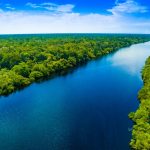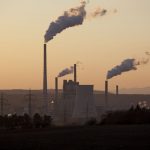Why Are Forest Fires Occurring More Frequently?
- Categories:
- Climate Change
- Forests

It’s not hard to notice the increasing frequency of forest fires. The Australian bushfires of 2019–20 dominated the headlines pre-coronavirus and the Brazilian rainforest has suffered a 13% increase in fires for the first 9 months of this year compared to the last.
On top of all that, the wildfires in California this August expanded to such an extent that it became the first recorded ‘gigafire’ in modern history, stretching to over 1m acres, an area bigger than the state of Rhode Island.
What causes wildfires?
Wildfires can be started by lightning strikes but are also commonly caused by malfunctioning equipment, downed power lines and man-made fires such as campfires, burning debris, arson or discarded cigarettes. When these fires are lit in areas where the sparks can reach dry vegetation, the flame can spread rapidly through the combustible materials.
Hot, dry climates with plenty of vegetation, and where the majority of rainfall and snow happen during the winter with warm, dry summers, are at the highest risk of wildfires.
What factors are contributing to the frequency and severity of forest fires?
The frequency and severity of forest fires in a year depend on several variables such as the temperature, wind conditions, level of precipitation and the number and intensity of the initial fires that cause the spread. However, there are other factors at play.
Climate change
One of the main reasons why forest fires are occurring more frequently is the effects of climate change. In fact, the number of autumn days with weather suitable for wildfires has more than doubled since the 1980s as a result of climate change and it is believed that climate change made the Australian bushfires at least 30% more likely — and that is a conservative estimate.
Global warming increases the chance of lightning strikes and may also increase the intensity and frequency of droughts in many areas, which leads to the growth of low vegetation which creates more intense and frequent wildfires.
Professor Anthony Westerling studied the correlation between climate conditions and the frequency of large forest fires and found that “there is no question whatsoever that climate plays a role in the increase in fires. I think it is shown without any room for reasonable doubt that climate is warming and becoming more variable because of human activity.”
Fuel aridity
Climate change is creating the perfect conditions for forest fires to spread by increasing fuel aridity, and this is the reason why forest fires are occurring more frequently.
Fuel aridity refers to how dry the vegetation is in the area of a forest fire, determined by the temperature and precipitation. For wildfires to occur, the conditions must be dry enough for the vegetation to act as kindling for the fire and, as rising temperatures cause increased water loss from vegetation and drier soils, these are exactly the conditions we are seeing.
Fire suppression practices
One other factor that can be used to explain why forest fires are occurring more frequently now is how forest fires have been suppressed in the past. The Wilderness Society explains that the “dominant strategy for dealing with wildfires was to prevent them or fight them whenever they popped up”, which may have caused more harm than good.
The problem is that some fires occur naturally in the wild and, afterwards, the soil’s nutrients can be replenished, making it more fertile. Without allowing these natural, lower risk fires to take their course, the land becomes overrun with plant material that becomes kindling for future fires, fires which then become more difficult to control.
What can be done?
These forest fires will only become worse as the climate crisis escalates, and the latest figures show that we have just 12 years to limit global warming in order to avoid the worse consequences. The main action we must take to counteract this is to bring down our emission levels by reducing our use of fossil fuels and to start using more renewable energy sources.
Another action is to invest in restoration projects that make forests more resilient to wildfire by planting tree species that have resistance to the effects of climate change. This is as well as allowing natural, lower risk forest fires to take their course in order to prevent a build-up of vegetation that makes future fires more intense.
A simple action we can all take is to start contributing to charities that focus on fighting climate change. One way to do this is to start using a charitable search engine such as SearchScene — we donate 95% of our profits to environmental charities.
This article first appeared on Medium.










